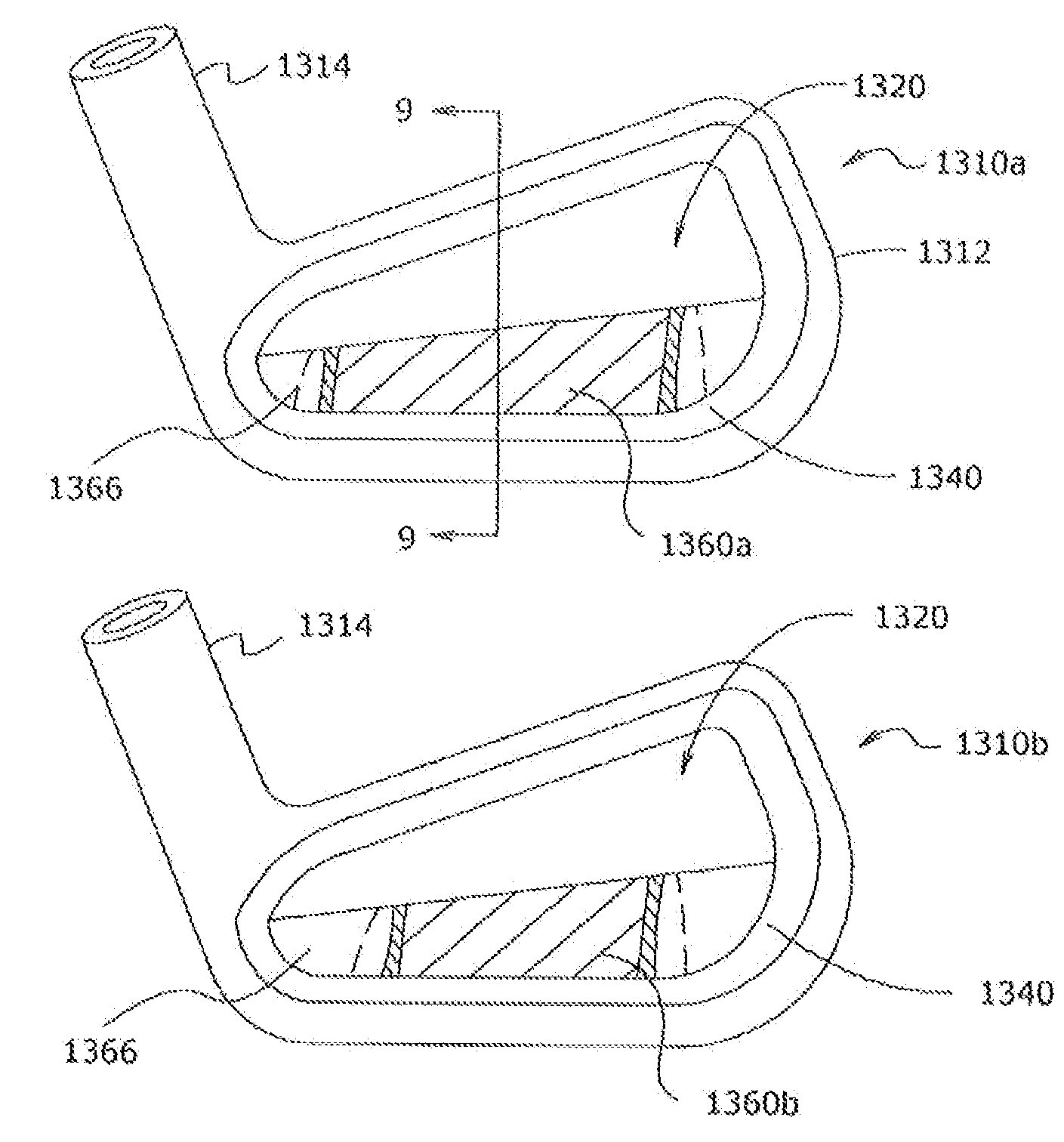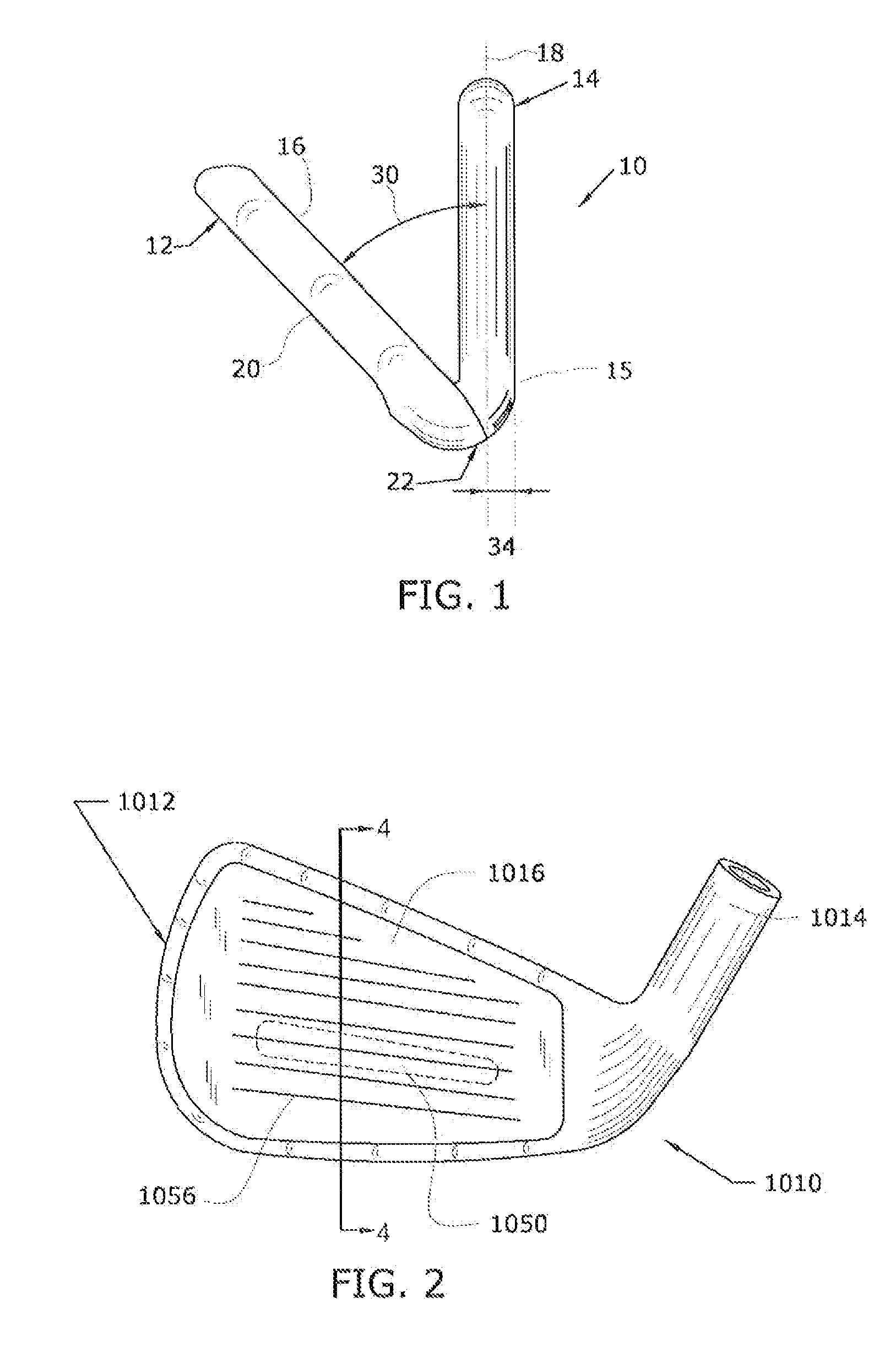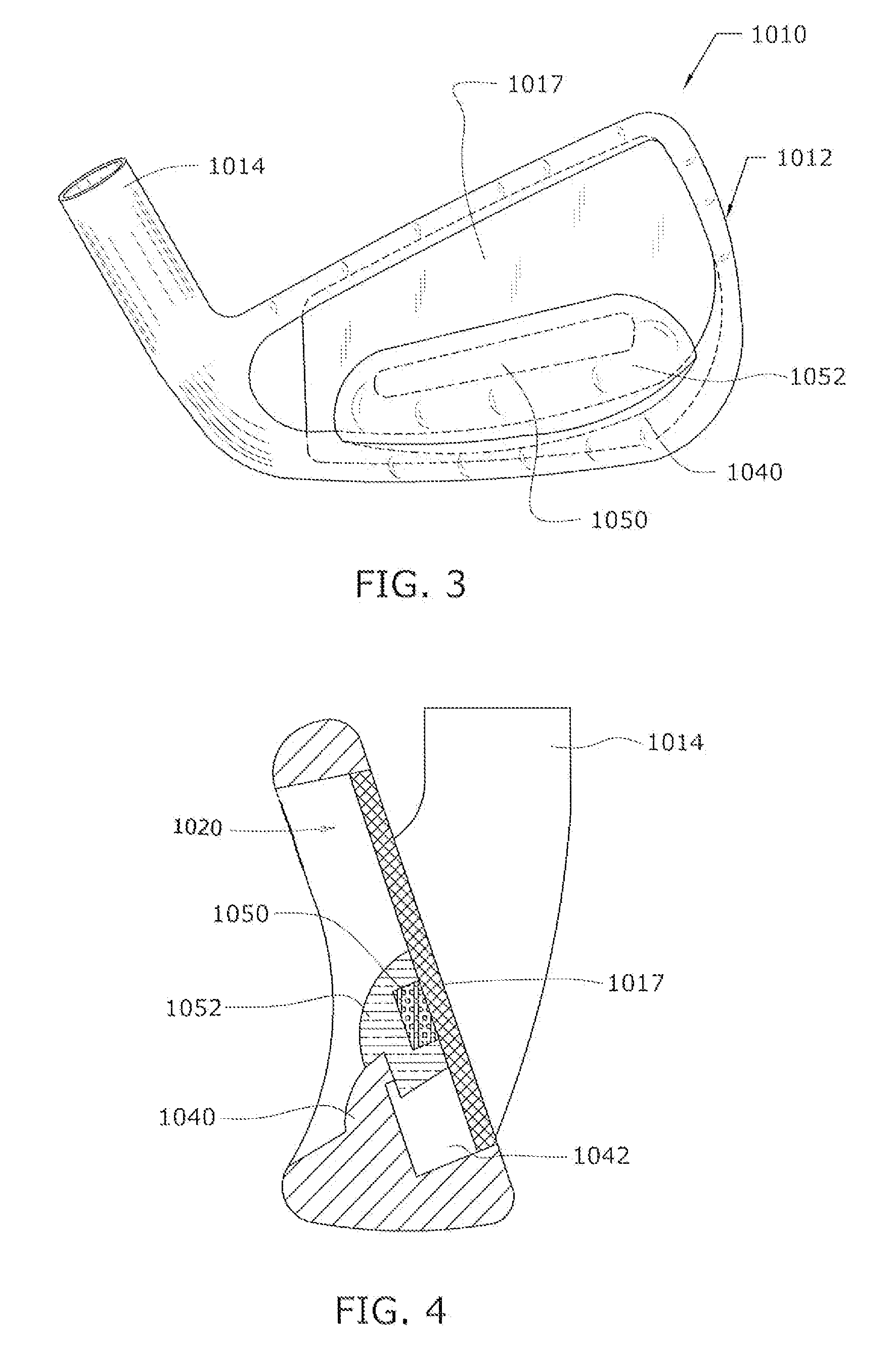Iron-type golf clubs
a golf club and iron-type technology, applied in the field of golf clubs, can solve the problems of difficult to achieve the fine tuning of the center of gravity and moment of inertia properties, and the difficulty of hitting consistently well by the average golfer
- Summary
- Abstract
- Description
- Claims
- Application Information
AI Technical Summary
Benefits of technology
Problems solved by technology
Method used
Image
Examples
Embodiment Construction
[0035]As illustrated in the accompanying drawings and discussed in detail below, the present invention is directed to a set of iron-type golf clubs. For the purposes of illustration, FIG. 1 shows a reference iron-type club head 10 for defining various design parameters for the present invention. These design parameters for the clubs are chosen such that the parameters progress through the set from the long irons to the short irons in a pre-determined fashion. Club head 10 is attached to a shaft (not shown) in any manner known in the art.
[0036]Club head 10 includes, generally, a body 12 and a hosel 14. Body 12 includes a striking or hitting face 16 and a rear face 20. Body 12 is attached to hosel 14 at an angle, such that a loft angle 30 is defined between a hosel center line 18 and hitting face 16. Further, the relative configuration of body 12 and hosel 14 results in an offset 34 between the leading edge 22 of the base of the hitting face and the forward-most point 15 of the hosel....
PUM
| Property | Measurement | Unit |
|---|---|---|
| length L3 | aaaaa | aaaaa |
| length L3 | aaaaa | aaaaa |
| angle | aaaaa | aaaaa |
Abstract
Description
Claims
Application Information
 Login to View More
Login to View More - R&D
- Intellectual Property
- Life Sciences
- Materials
- Tech Scout
- Unparalleled Data Quality
- Higher Quality Content
- 60% Fewer Hallucinations
Browse by: Latest US Patents, China's latest patents, Technical Efficacy Thesaurus, Application Domain, Technology Topic, Popular Technical Reports.
© 2025 PatSnap. All rights reserved.Legal|Privacy policy|Modern Slavery Act Transparency Statement|Sitemap|About US| Contact US: help@patsnap.com



